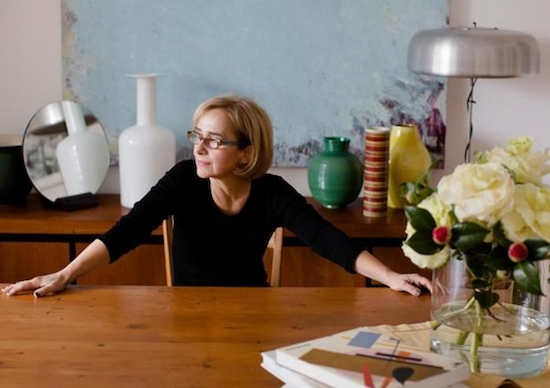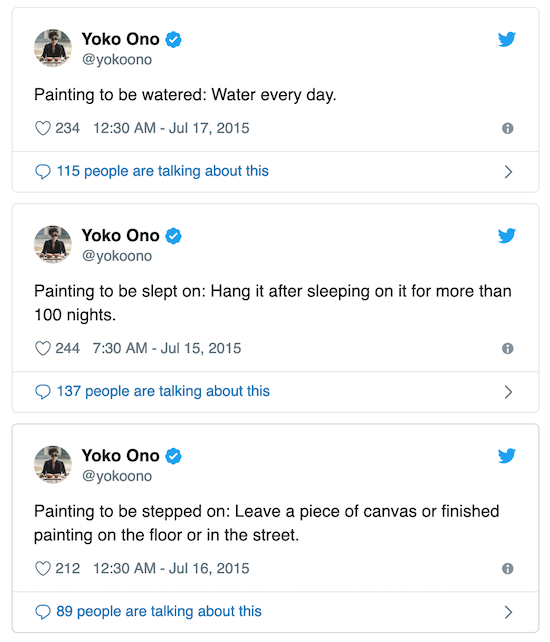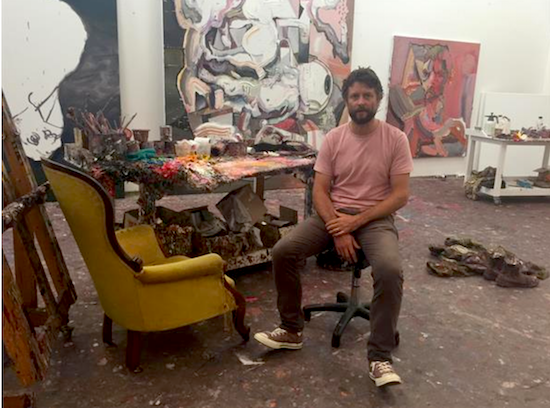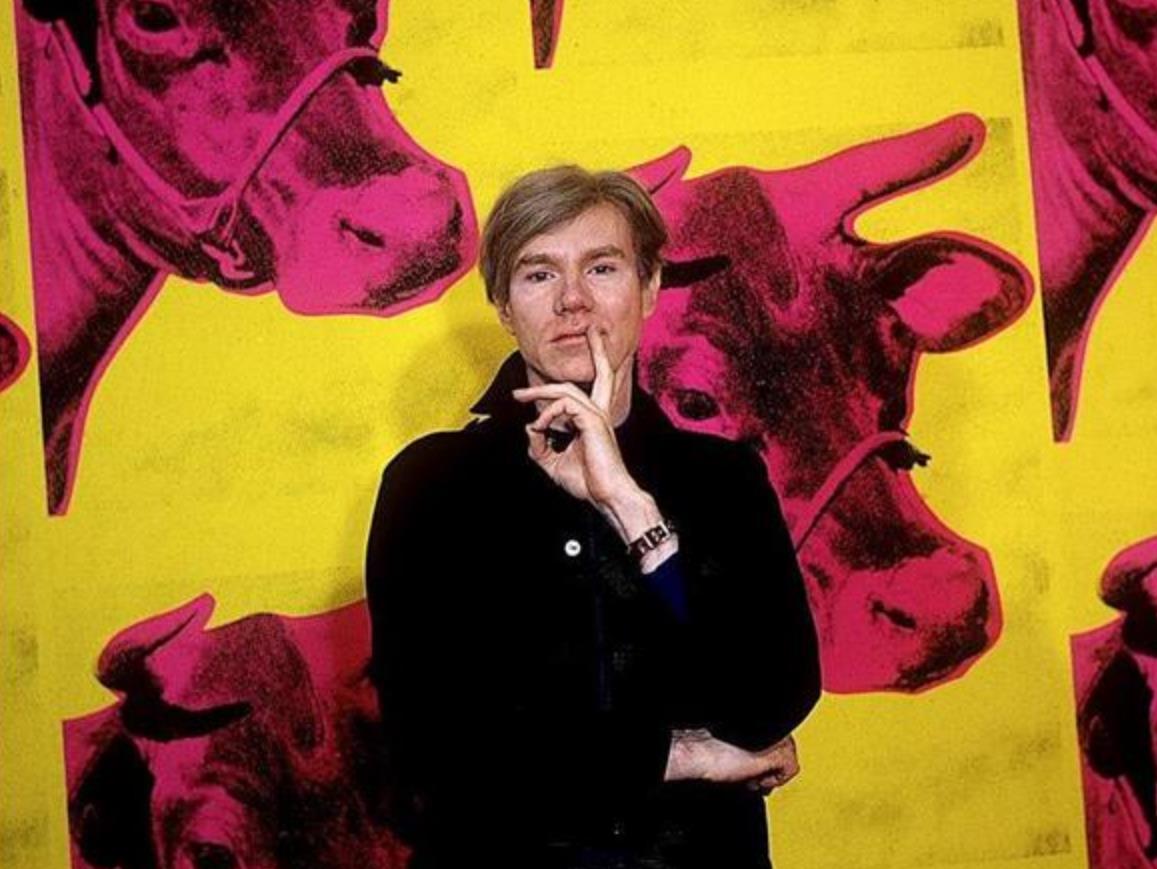All images supplied by National Gallery of Victoria as featured in Andy Warhol | Ai Weiwei exhibition 2016.
1. Andy Warhol
Andy Warhol was famed for delivering pithy philosophies on business, commerce, money, art and life to derive lessons for the modern day artist. Here are a couple of our favourite gems of Warholian advice:
‘You know it’s ART, when the cheque clears.’
‘Business art is the step that comes after art. I started as a commercial artist, and I want to finish as a business artist. Being good in business is the most fascinating kind of art. During the hippie era people put down the idea of business.They’d say “money is bad” and “working is bad”. But making money is art, and working is art – and good business is the best art.’
Read: Career and money advice from Andy Warhol

Patricia Piccinini; Photo Alli Oughtred. Image supplied.
2. Patricia Piccinini
‘When people told me that they weren’t interested in my work I took it as a challenge to work out why, and come back to them with something more compelling,’ said Melbourne-based artist Patricia Piccinini.
‘Thirty years down the track people still say no to you – it is just the way it is. You just have to accept it and find another way to go forward.’
Read: Patricia Piccinini on running an ARI
3. Pablo Picasso
Pablo Picasso was one of the most prolific and inspirational artists in art history. His philosophy was to ‘create like a child’.
‘Every child is an artist. The problem is how to remain an artist once he grows up,’ he said. ‘It took me four years to paint like Rafael, but a lifetime to paint like a child.’
Despite his mega success, Pablo Picasso said in a 1956 interview with Vogue: ‘Success is dangerous. One begins to copy oneself, and to copy oneself is more dangerous than to copy others.’
4. Vincent Van Gogh
In a particularly impassioned letter to his brother Theo on 2 October, 1884, Vincent Van Gogh writes:
‘If one wants to be active, one mustn’t be afraid to do something wrong sometimes, not afraid to lapse into some mistakes. To be good — many people think that they’ll achieve it by doing no harm — and that’s a lie… That leads to stagnation, to mediocrity. Just slap something on it when you see a blank canvas staring at you with a sort of imbecility.
You don’t know how paralysing it is, that stare from a blank canvas that says to the painter you can’t do anything. The canvas has an idiotic stare, and mesmerises some painters so that they turn into idiots themselves.
Many painters are afraid of the blank canvas, but the blank canvas IS AFRAID of the truly passionate painter who dares — and who has once broken the spell of “you can’t”.’
Source: Ever Yours: The Essential Letters (public library)

Aida Tomescu; Photo Jenny Carter. Image supplied.
5. Aida Tomescu
Aida Tomescu told ArtsHub that painting is still ‘like going down a mine without knowing the way out’. Her advice to any painter is get to the studio every day.
‘There is no such thing as inspiration. It gives the wrong idea, because painting is a laborious process – it has to be! It doesn’t just come. With painting, the more you give it the more it needs. If you give it seven days a week it needs nine. If you give it 10 hours a day it needs 12,’ said Tomescu
‘Painters like (Willem) de Kooning talk about painting as a means to practise their intuition. So going to the studio every day and that daily discipline will help you tune that into that layer that feeds your painting.’
She believes that the creative process will dictate the terms, and that if an artist truly wants to be a painter then they have to listen to, and follow that need and be committed to give their time to it every day. It’s a business – the business is painting.
Read: Seven life lessons for artists
6. Julian Schnabel
In an interview in 2015 Julian Schnabel said: ‘You know, when I was younger I was worried if the last painting that I made didn’t look anything like the one that came before it. And after a while, I realised that that was a blessing—even though some people who liked work of mine were dismayed when my work didn’t repeat itself. But it was never my intention to do that, to be a chameleon. There were just things that I wanted to see, or different properties that things had that led me to other things. It was always an experiment. So I ended up making paintings where I used plaster and joint compound, or I’d cut holes in the paintings, or I made them from projective drawing tests. I made all kinds of paintings.’
7. Charles Saatchi
Charles Saatchi has so many snippets of advice to share that he wrote a book full of the: My name is Charles Saatchi and I am an Artoholic (2012). This is one that caught our eye, responding to the question, ‘How do you choose what art to buy?’
‘The more you like art, the more art you like. So I find it easy to buy lots of it, and seeing art as an investment would take away all the fun. Any profit I make selling art goes back into buying more art.’
8. Yoko Ono
The pioneering artist, prolific musician and staunch activist has turned her attention in recent years to twitter, with a diet of quirky haikus:
‘Write all the things you want to do. Ask others to do them and sleep until they finish doing them. Sleep as long as you can.’ (@yokoono) July 30, 2015

9. Jeff Koons
In a 2015 interview with Emma Brockes for The Guardian, Jeff Koons said on collecting and durability: ‘I try to make pieces that are durable. One of the reasons that I work in steel is durability. Yes, you have a sense of idealism in your mind, but then there’s reality. It happens to everybody – the work is held by someone who doesn’t even particularly enjoy the work, and just has it stored in some warehouse and will sit there for 20 years. Or someone doesn’t understand it physically, and their motivations are just to show that they have the power to purchase. There’s not much you can do; that’s about educating people, and the way you can educate them is through your art. And I try to educate people about materialism through my work. I try to show them real visual luxury. It’s intoxicating visually.’

Ben Quilty in his Southern Highlands studio. Image ArtsHub.
10. Ben Quilty
‘It is that tricky balance of ego and confidence; self-confidence comes with age. Some artists do it in their twenties, but I couldn’t do that. I guess for me, with time has come a sophistication and a braver vision,’ he told ArtsHub of the timing of this major survey exhibition.
His advice was: ‘Privacy is so key. I have had this [studio] space for five years – it was most definitely a conscious choice to separate home and my studio; I don’t take my work home, ever.’
Read: Ben Quilty on self-doubt and the toll of success

This article was first published 21 September 2019.





